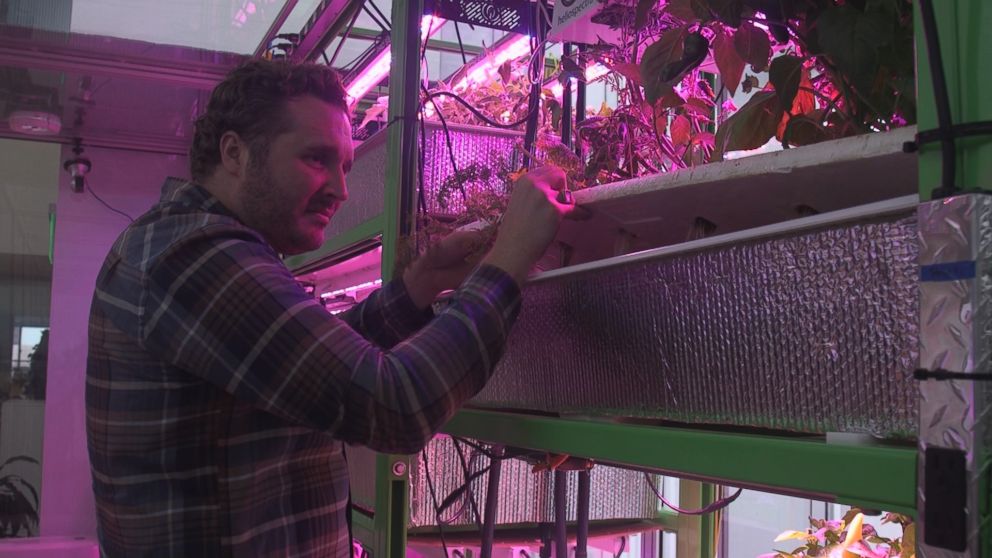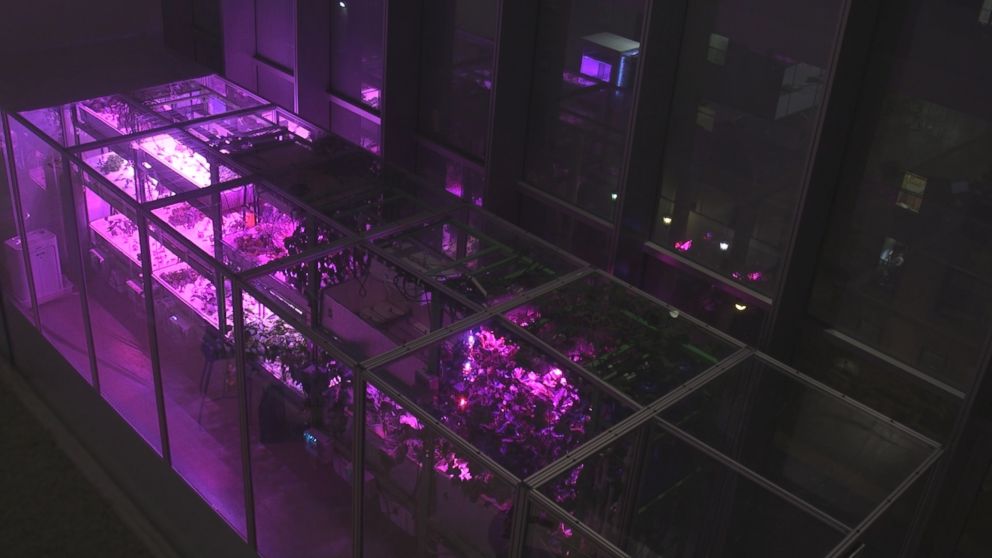Food Computer: How Caleb Harper Inspires Us to Be Future Farmers
Caleb Harper is not your typical farmer.
— -- Caleb Harper has taken some detours on the path to becoming a farmer. Though his family was involved in agriculture and the grocery business, he didn’t want to follow in their footsteps. Instead, he left Texas and became an architect and engineer.
“I became this weird specialist in controlled environments,” Harper told ABC News. “I designed surgical theaters where people are very vulnerable, and I designed centers where computers are very vulnerable.”
But it wasn’t until a trip to the area near Fukushima, Japan, right after the devastating tsunami in March 2011 that he decided to apply his design skills to feeding people.
“So it was in that very small place that I was inspired to say, ‘OK, well, if you can’t use the world you have, then you could just create a new world.’” The new “world” that Harper created fits neatly into a pink glowing box.

Harper’s farm sits in Cambridge, Massachusetts, and is the size of a shipping container. There, at the Massachusetts Institute of Technology Media Lab, where he is a research scientist, crops like basil, broccoli and even cotton are flourishing under LEDs. He created these food computers as a tool for the next generation of farmers.
Systems can range in size from desktop to shipping container models. Harper was inspired by his work designing climate-controlled data centers, and he enabled his chambers' farmers to create specific environments. Variables like carbon dioxide, temperature, humidity and minerals are all customizable.
“Finding the Next” full episodes will release Mondays on ABCNews.com and ABC News mobile apps. The entire series is available now on ABC News apps on Apple TV, Roku and Xbox One.
The glowing pink box contains plants, sensors, meters, grow lights, irrigation pumps and chemical dosers. Harper said his crops are able to grow much more quickly inside the box than in a field. His plants also require less water and travel far shorter distances to the dinner table.

Harper doesn’t want his food computers to be confined to the MIT Media Lab. The future of agriculture, he said, could include these hyperefficient growing systems in households from Antarctica to sub-Saharan Africa.
“You might have one at your house, at your school. You might have it underground. In places that are too hot, you could have subterranean food data centers in the future,” he said.
To achieve this goal, Harper has made his work open source. Aspiring farmers can download directions on how to build their own food computer, share their data, exchange climate “recipes” for their systems and keep up to date with software improvements.
“I wanted to create a tool that other people could use to solve problems,” he said. “I’m just a toolmaker for the next generation of farmers.”
To encourage young people to hack the food system, Harper and his team have distributed food bots to Boston schools. At a recent assembly at the Shady Hill elementary school in Cambridge, he spoke about his project to a group of students.
“I would call this the beginning of the internet of food,” he told the young audience. “And it’s squarely in your hands.”
For more stories from our “Finding the Next” series, just “star” this story in ABC News’ phone app. Download ABC News for iPhone here or ABC News for Android here.




